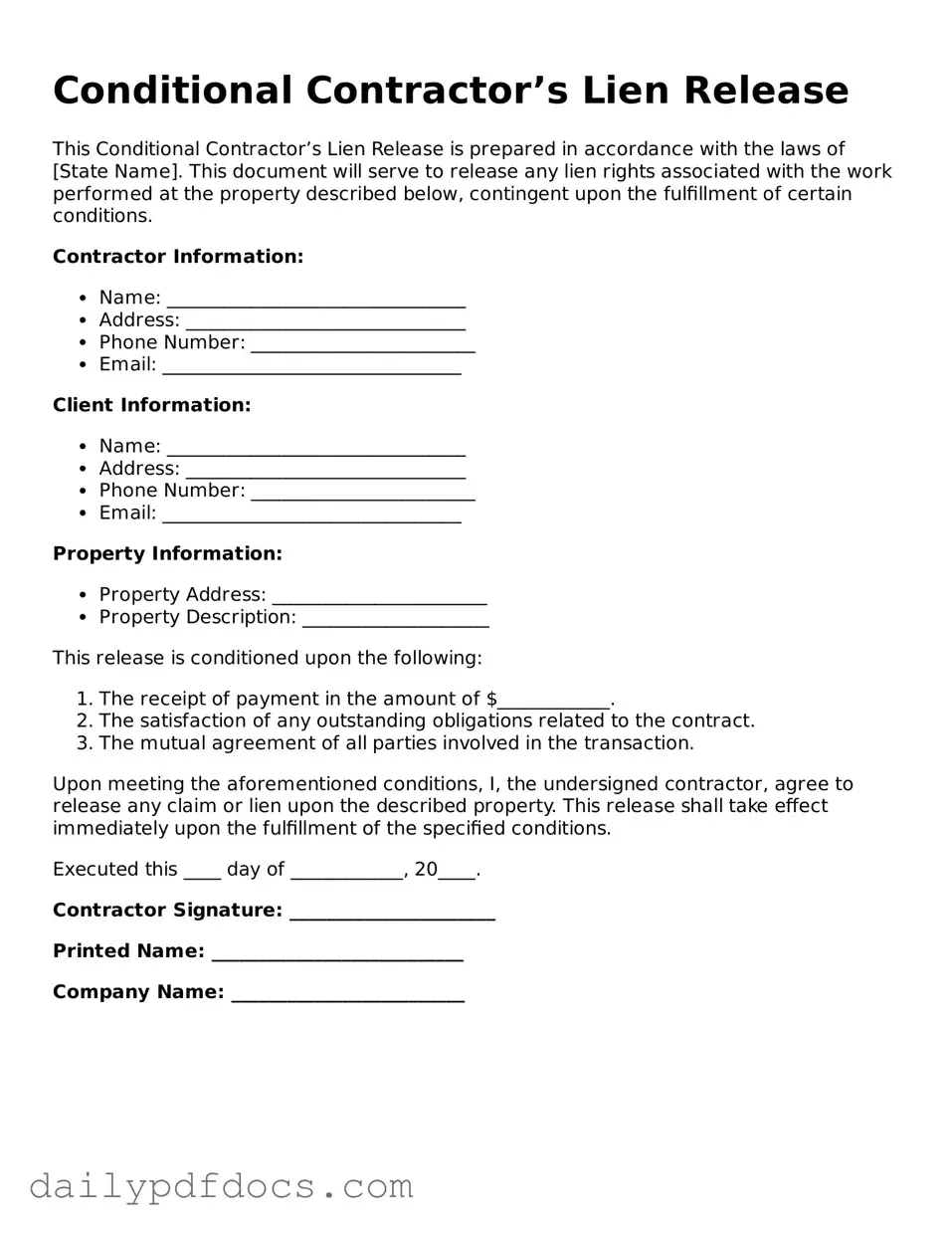What is a Conditional Contractor’s Lien Release form?
A Conditional Contractor’s Lien Release form is a legal document used in construction projects. It allows a contractor to release their lien rights conditionally, meaning that the release is effective only upon receiving payment. This form helps ensure that contractors can secure payment while also providing assurance to property owners that they will not face future claims for unpaid work.
When should I use a Conditional Contractor’s Lien Release form?
This form should be used when a contractor has completed work on a project and is expecting payment. Before receiving payment, the contractor can provide the property owner with this conditional release. It is particularly useful in situations where payment is expected shortly after the release is signed, as it protects both parties involved in the transaction.
What information is typically included in the form?
The Conditional Contractor’s Lien Release form usually includes the contractor’s name, the property owner’s name, a description of the work performed, and the amount due. Additionally, it may specify the conditions under which the release becomes effective, such as the receipt of payment. Clear identification of the project and any relevant dates are also essential components of the form.
Is the Conditional Contractor’s Lien Release form legally binding?
Yes, the Conditional Contractor’s Lien Release form is legally binding once signed by both parties. It creates an agreement that the contractor will not pursue a lien against the property for the specified work, provided that the payment conditions are met. However, it is crucial for both parties to understand the terms outlined in the document to avoid any future disputes.
What happens if payment is not made after signing the form?
If payment is not made after the Conditional Contractor’s Lien Release form is signed, the contractor retains the right to file a lien against the property. The release is conditional, meaning it only takes effect upon payment. Therefore, if the payment is not received, the contractor can still seek legal remedies to recover the owed amount.
Can I modify the Conditional Contractor’s Lien Release form?
Yes, modifications can be made to the Conditional Contractor’s Lien Release form, but it is essential to ensure that any changes are clearly documented and agreed upon by both parties. It is advisable to consult with a legal professional to ensure that modifications do not affect the enforceability of the document or create ambiguity regarding the terms of the release.
